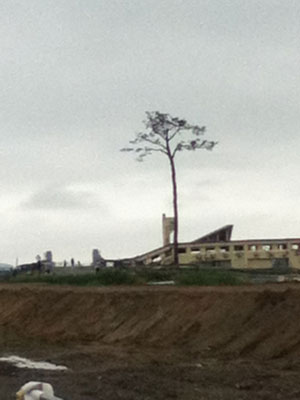

 Shannon Foremaster
Shannon Foremaster
Kempsville High School
Virginia Beach, VA
The 2013 JET Memorial Invitation Program was definitely the most wonderful trip I have ever been on. Through meeting dedicated American students learning Japanese, as well as actual Japanese students, I not only learned more about the language and culture of Japan, but also formed lasting bonds and friendships with people in both countries.
Throughout the duration of the program, JET-MIP participants were exposed to a world which none of us had experienced before. It was thrilling and amazing at the same time. In Japan, everything was different; the streets were narrower, the cars smaller, and everything seemed cleaner. And of course, the language barrier was there as well.
All of us had to use the Japanese language skills we had been taught in order to communicate with the people around us. At times, like in stores and shops, we were able to ask each other for help on translation. Other times, we were completely on our own- like at our Sendai and Osaka homestays. Either way, it was the first time our Japanese communication skills had ever been put to the test in a real life situation.
In the beginning, I was nervous about talking with Japanese people. I thought my Japanese proficiency level was nowhere near fluent and thereby, I would make a lot of mistakes while conversing. But then I realized that it was all part of the learning experience- the more you talk, the more mistakes you make- and the more you end up learning! It was this realization that helped me feel more comfortable speaking Japanese.
The thing that fascinated me the most about Japan was the demeanor of the people that I met there. They were all extremely polite, friendly, and all seemed genuinely interested in meeting me. Although their personalities ranged from shy and quiet to talkative and energetic, they all were courteous and respectful, and overall I was met with an extremely positive reception.
My favorite experience in Japan would have to be the time we spent at Hotel Boyo. The hotel itself was magnificent. It was the first time I ever slept on an actual Japanese futon, and also the first time I ever tried going into an onsen-style bath. It turns out that I enjoyed both of them immensely. In addition, the food that was prepared there was some of the best I’ve tried in all Japan. I also loved learning the backstory about how the owner, Mr. Eiichi Kato, turned his hotel into a place for refugees to stay after the tsunami.
During one of the evenings we were staying there, he invited me to talk with him and some of his volunteers. I was a bit nervous at first, but his friendly and welcoming personality washed away all of my inhibitions. He spoke English very well, and we talked in a mixture of Japanese and English about all sorts of things- like the work that he did there, how life was in the U.S., my plans for the future, and even music! We found out that we share a common interest of smooth jazz! Overall, the evening that I spent talking with Mr. Kato was simply fantastic, and I was extremely happy that I was able to connect so well with someone. Experiences like this are what make me certain that I want to continue my study of Japanese- so that I am able to communicate with such fascinating people like Mr. Kato.
When it was time to head back to the U.S., all of us were pretty sad that we would be leaving the incredible country we’d all become accustomed to in the past couple of weeks. After the long, 10 hour trans-Pacific flight, we landed in Los Angeles. The funny thing was, like me, many of the JET-MIP students unintentionally retained some of the Japanese social customs such as bowing. I accidentally spoke to some of the L.A.X. airport staff in Japanese, and then quickly laughed it off. At first, it was hard getting used to speaking just English, since I had become used to having thoughts in Japanese.
Back home, many of my family and friends were surprised to hear that Japan was not the neon-lighted bustling urban metropolis they had envisioned. When I told them that the parts of Japan that I visited were fairly rural, most of their reactions were that of disbelief. I think that foreigners sometimes have this false notion that Japan is a nation comprised of Tokyo-esque cities all throughout, mainly because their exposure to Japanese culture is severely limited. Though I had the good fortune to be able to learn all about it through JET-MIP.
If I could write a message to the Monty and Taylor, the two amazing JET ALTs that passed away in the tsunami, I would want to say: You two are both very accomplished individuals. You both did what so many of us hope to do in our lives – to step out of the boundaries of the familiarity zone and to go to somewhere new and exciting in the world. Not only did you accomplish this, you were able to share your culture with Japanese youth and inspire them as their teachers. And that, I think, is one of the most precious notions of all- that you were able to build a bridge between our two nations as a mean of cultural exchange and education. Thank you both for this dedication. It will never be forgotten.

“Kiseki no Ippon Matsu” (The Miracle Tree)
This was the only tree left standing in this area in Rikuzentakata after the tsunami. Since then, the tree has died but has been preserved as a memorial. It has served as an inspiration to many and is a symbol for hope amidst the wreckage.